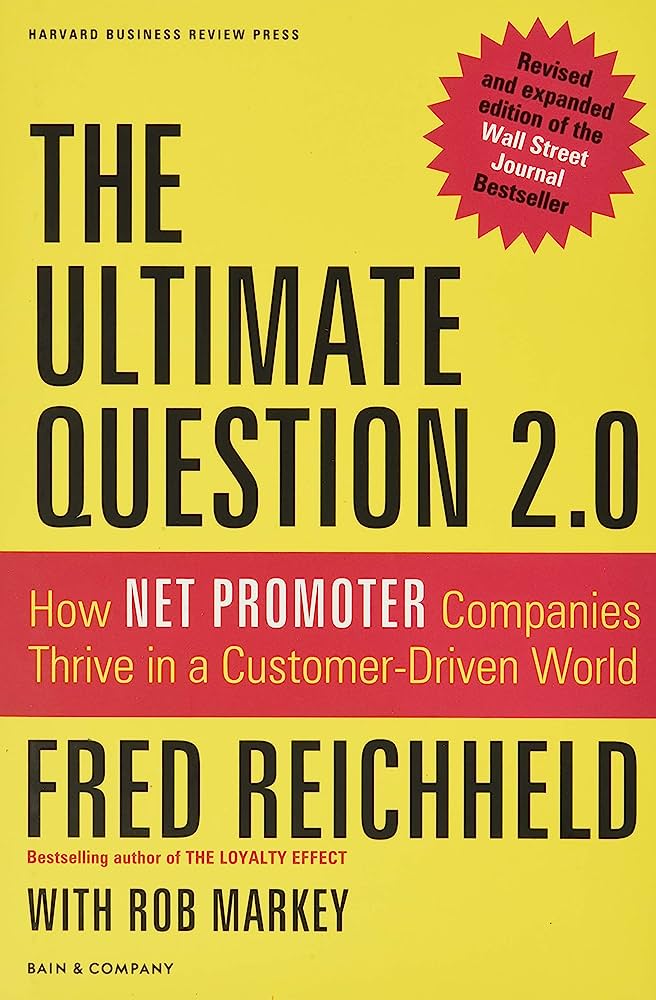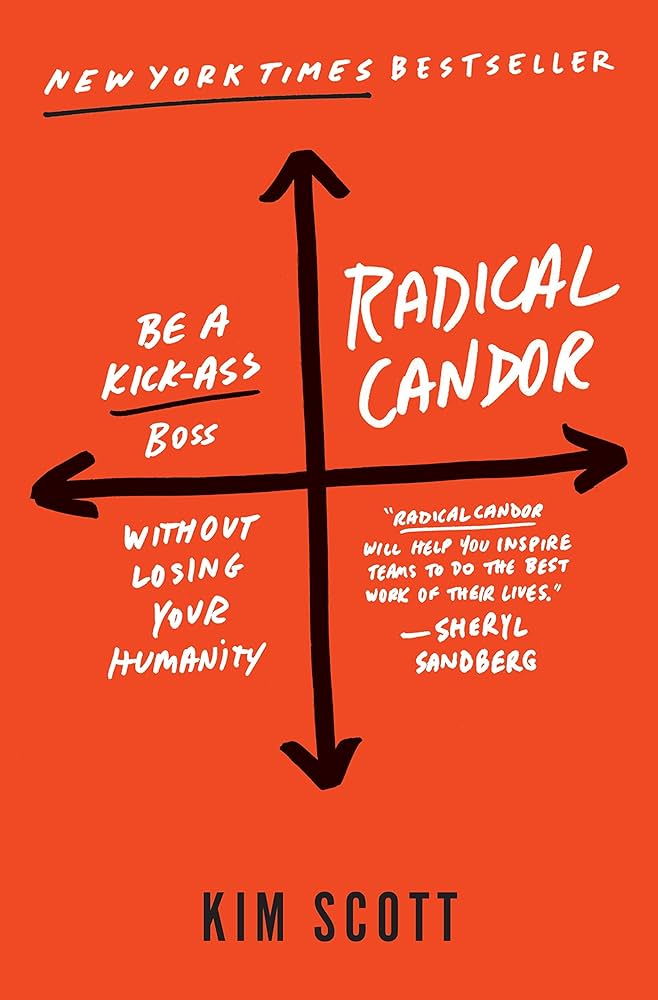The Ultimate Question 2.0 (Revised and Expanded Edition): How Net Promoter Companies Thrive in a Customer-Driven World
RATING


This is a revised and expanded edition of the original book published in 2006. In this updated edition, the author develops several of his concepts in more detail and provides more examples of how companies implemented the system.
The title refers to the question of ultimate importance: “On a zero to ten scale, how likely is it that you would recommend our company (or product, service, brand) to a family member, friend or colleague?” This book provides a comprehensive, cost-effective system consisting of 3 components: categorizing customers into 3 categories (promoters, passives, detractors), creating a simple scoring based on the categories, and framing progress and success in these terms. The methodology is simple yet effective in results – framing progress and success in these terms, thereby motivating everyone in the organization to take the actions required to produce more promoters and fewer detractors. This methodology provides an ongoing system for measuring feedback and continual improvement. This is the essence of the Net Promoter Score (NPS). The authors provide 8 Principles to calculate your customers’ promoter status in order to focus attention throughout your organization on the customer, emphasizing that companies need to report and discuss NPS data as frequently as financial data. Hundreds of the world’s largest corporations have adopted this scoring system.
This book and the system of scoring are impressive for their simplicity. As the author says, “this is a business philosophy, a system of operational practices, and a leadership commitment, not just another way to measure customer satisfaction.” This focus on one key question makes the book and the system easy enough for every employee to understand. The authors also devote chapters at the end to address shortcomings of NPS and list areas where it will need improvements as it matures, as well as advice from some of the leading companies and their experience with NPS.
Some criticize the book as being too long; given the simplicity of this scoring system, it can be condensed into an article rather than a 300 page book. However, as the author notes, NPS is more than just a scoring system. The book could use more specific examples or templates. The NPS is also to some extent oversimplified, so it is recommended to use it as part of a combination of metrics to assess customer satisfaction. There have been several examples of companies which failed in a big way while relying on NPS. Many companies overly rely on the NPS while failing to balance the costs of gaining consumer promoters and whether that translates into profitability. For more on this subject, see the Senteo review for Measuring Customer Satisfaction and Loyalty.
In the first edition of this landmark book, business loyalty guru Fred Reichheld revealed the question most critical to your company’s future: “Would you recommend us to a friend?” By asking customers this question, you identify detractors, who sully your firm’s reputation and readily switch to competitors, and promoters, who generate good profits and true, sustainable growth. You also generate a vital metric: your Net Promoter Score. Since the book was first published, Net Promoter has transformed companies, across industries and sectors, constituting a game-changing system and ethos that rivals Six Sigma in its power.
In this thoroughly updated and expanded edition, Reichheld, with Bain colleague Rob Markey explains how practitioners have built Net Promoter into a full-fledged management system that drives extraordinary financial and competitive results. With his trademark clarity, Reichheld:
- Defines the fundamental concept of Net Promoter, explaining its connection to your company’s growth and sustained success
- Presents the closed-loop feedback process and demonstrates its power to energize employees and delight customers
- Shares new and compelling stories of companies that have transformed their performance by putting Net Promoter at the center of their business
Practical and insightful, The Ultimate Question 2.0 provides a blueprint for long-term growth and success.
Given the simplicity of the methodology, this book should be appealing to executives and employees alike. The NPS is used widely as a metric for measuring and delivering customer satisfaction and potential for continuous improvement. It is also of interest and well known to consultants (developed by Bain).

NPS is first and foremost a scoring system and methodology for delivery of customer satisfaction and provides valuable information that can be used for continuous improvement.
See content on this topic

Sales training for front line along with basic development and coaching principles for line management.
Understanding branding and communications from the standpoint of emotional engagement and building relevant and meaningful dialogue with customers.
This course covers a complete view of customer touch points (both physical and virtual) and a unique model for standardizing and managing customer contact models across channels including approaches for customer feedback, quality management, and migration.
Understand how the innovation process changes moving from functionality and channel design to a process focused on creating value for customers.
Experiential Branding & Communications – Improving Brand Integration Through Emotional Engagement.
This course covers a complete view of customer touch points (both physical and virtual) and a unique model for standardizing and managing customer contact models across channels.
Understand the value of a customer-oriented analytics package and how behavioral scenarios can be used to improve profitability through influencing behavior and usage.
To understand the principles of game dynamics and learn how to effectively use the elements of gamification in business: to involve customers, employees and contractors in the process.
Understand the components and features in a complex Customer Relationship Management system (infrastructure, architecture, functionality, etc.) and the uses and benefits for both the business and the customer.
Understanding the range and function of different relationship management processes used to build customer engagement models and manage the quality of customer relationships.
Understand how the innovation process changes moving from functionality and channel design to a process focused on creating value for customers.
Understanding the drivers and mechanics of corporate culture will help any management to design and develop an organizational culture for success and growth.




 Copy Link
Copy Link
 E-mail
E-mail
 LinkedIn
LinkedIn
 Facebook
Facebook
 Telegram
Telegram
 WhatsApp
WhatsApp
















 Go Back
Go Back
Leave a Reply
You must be logged in to post a comment.